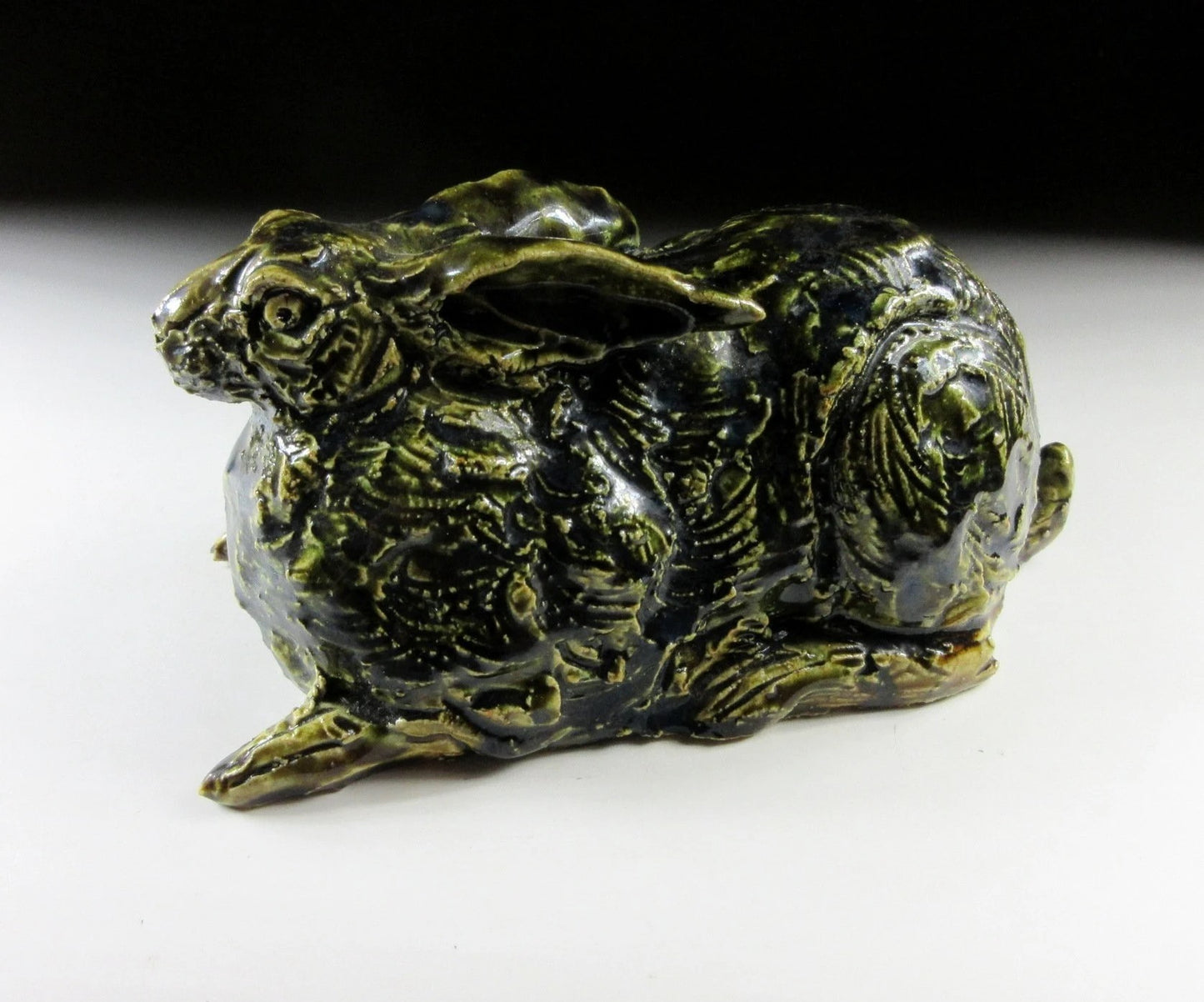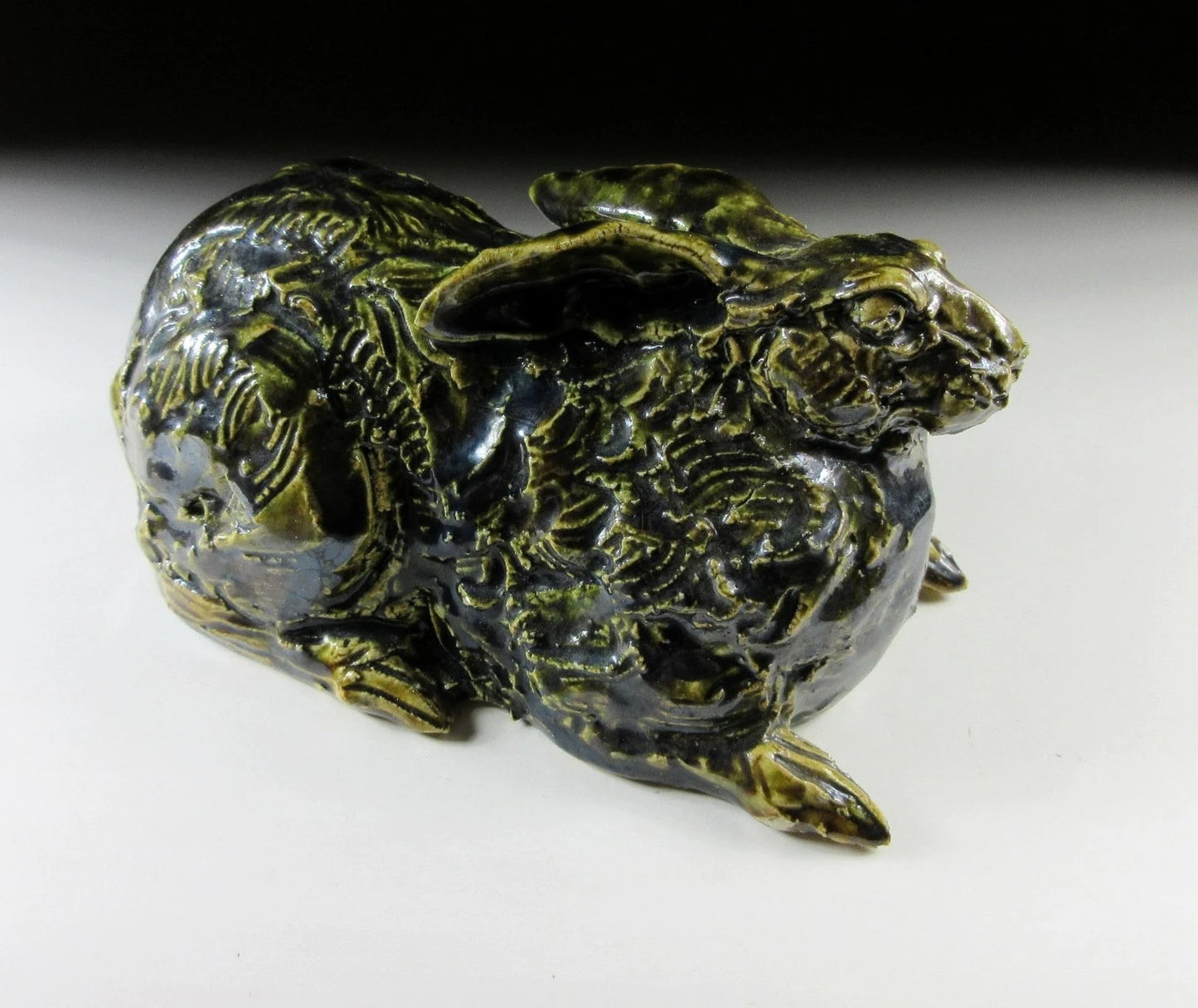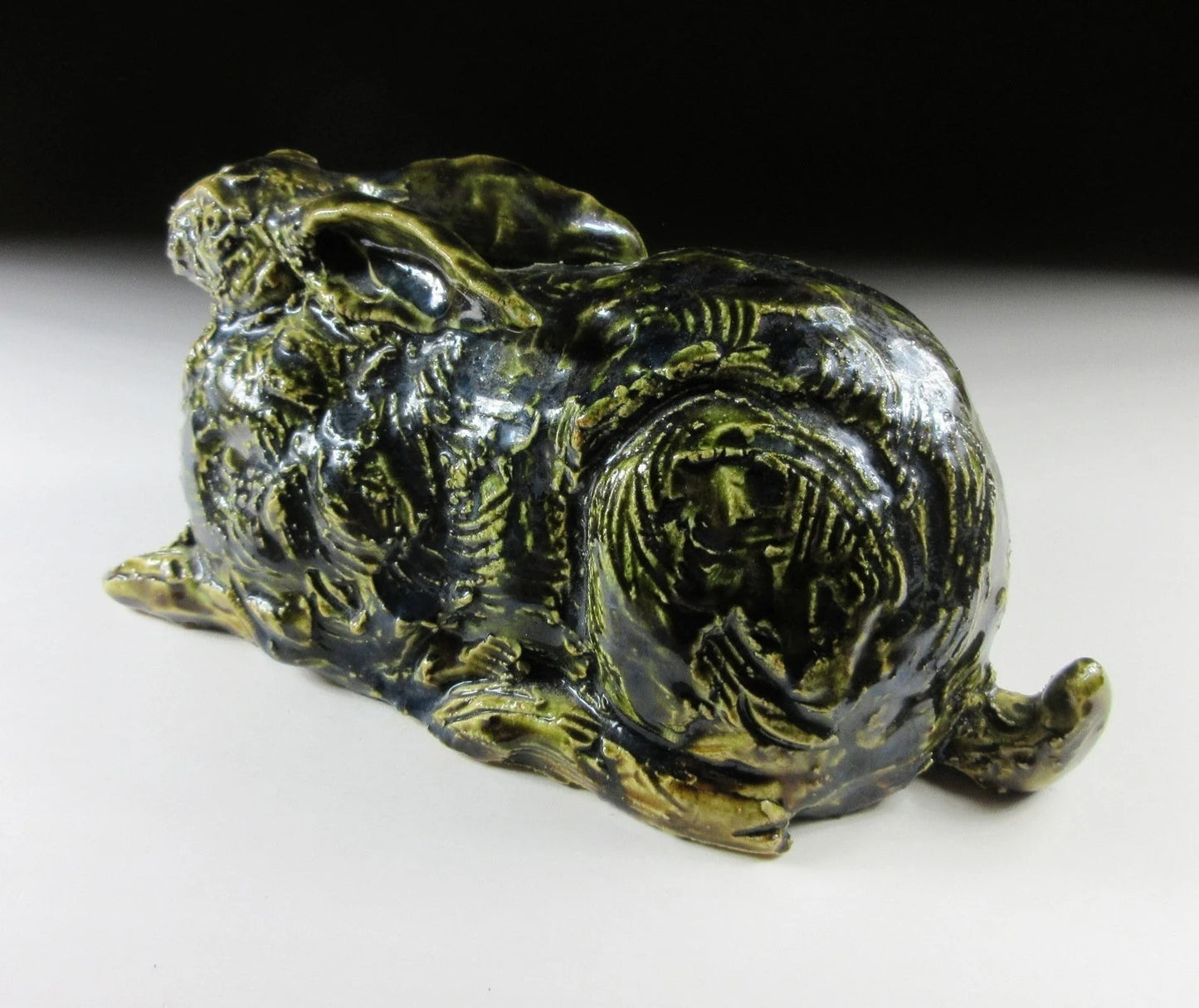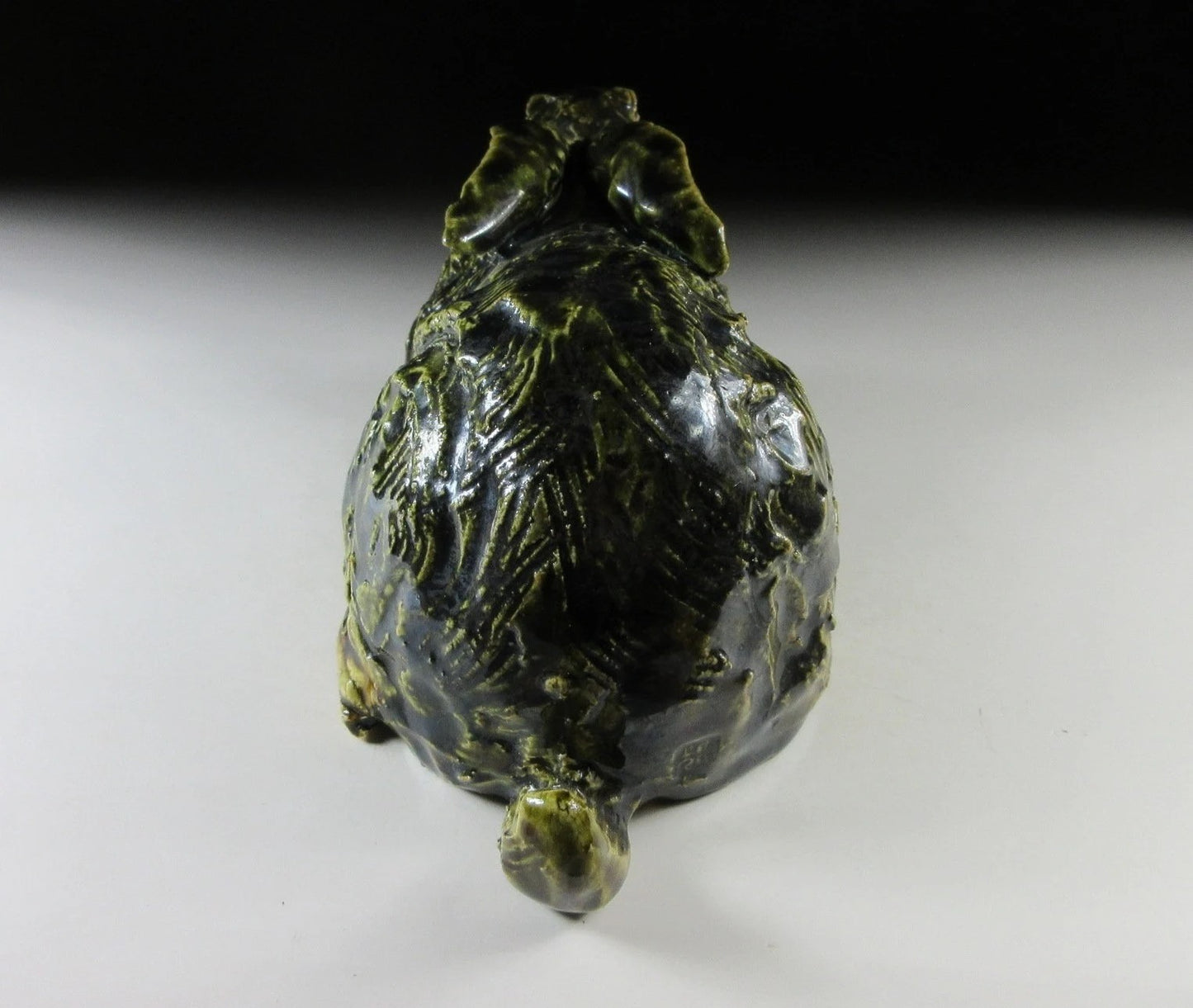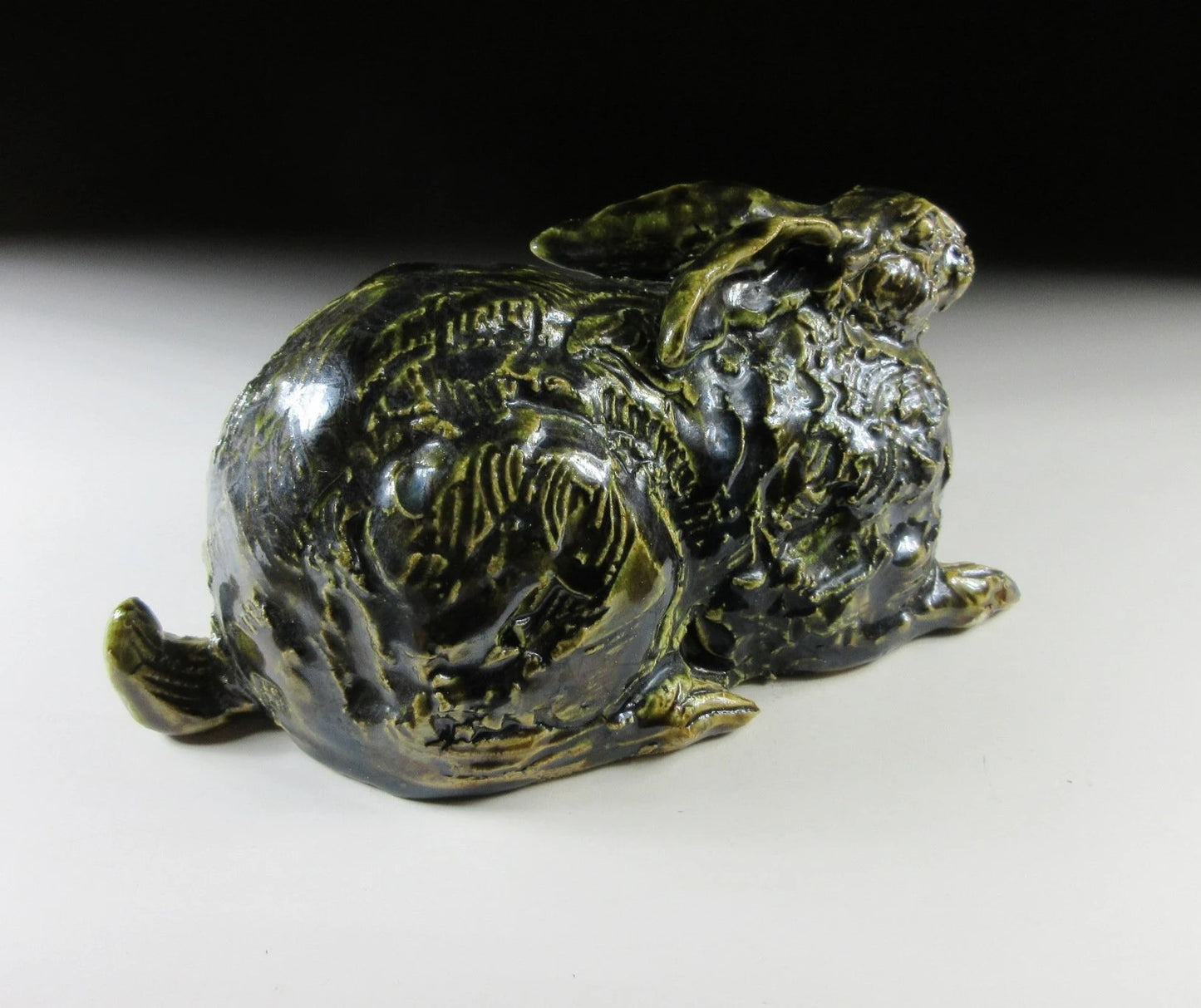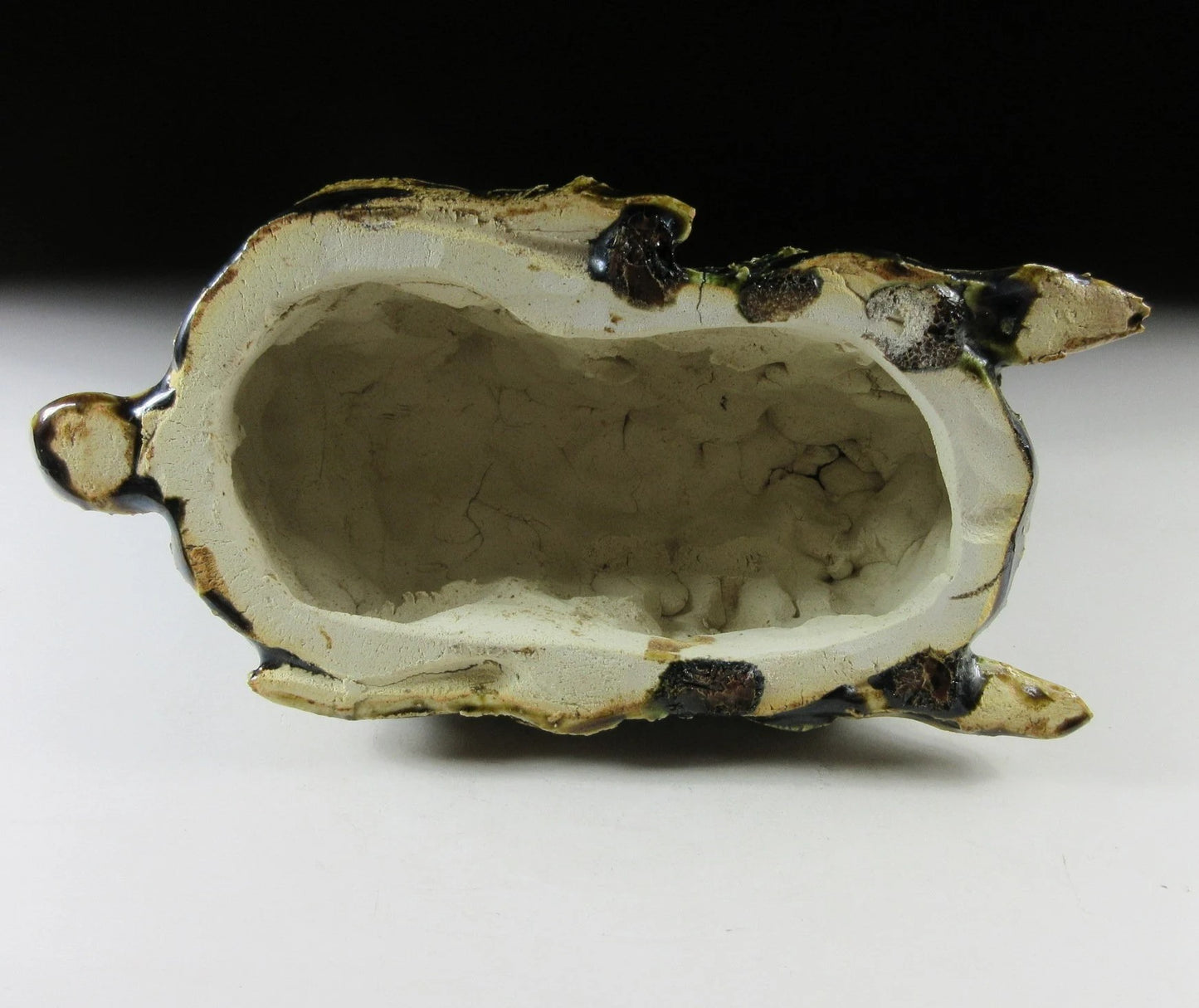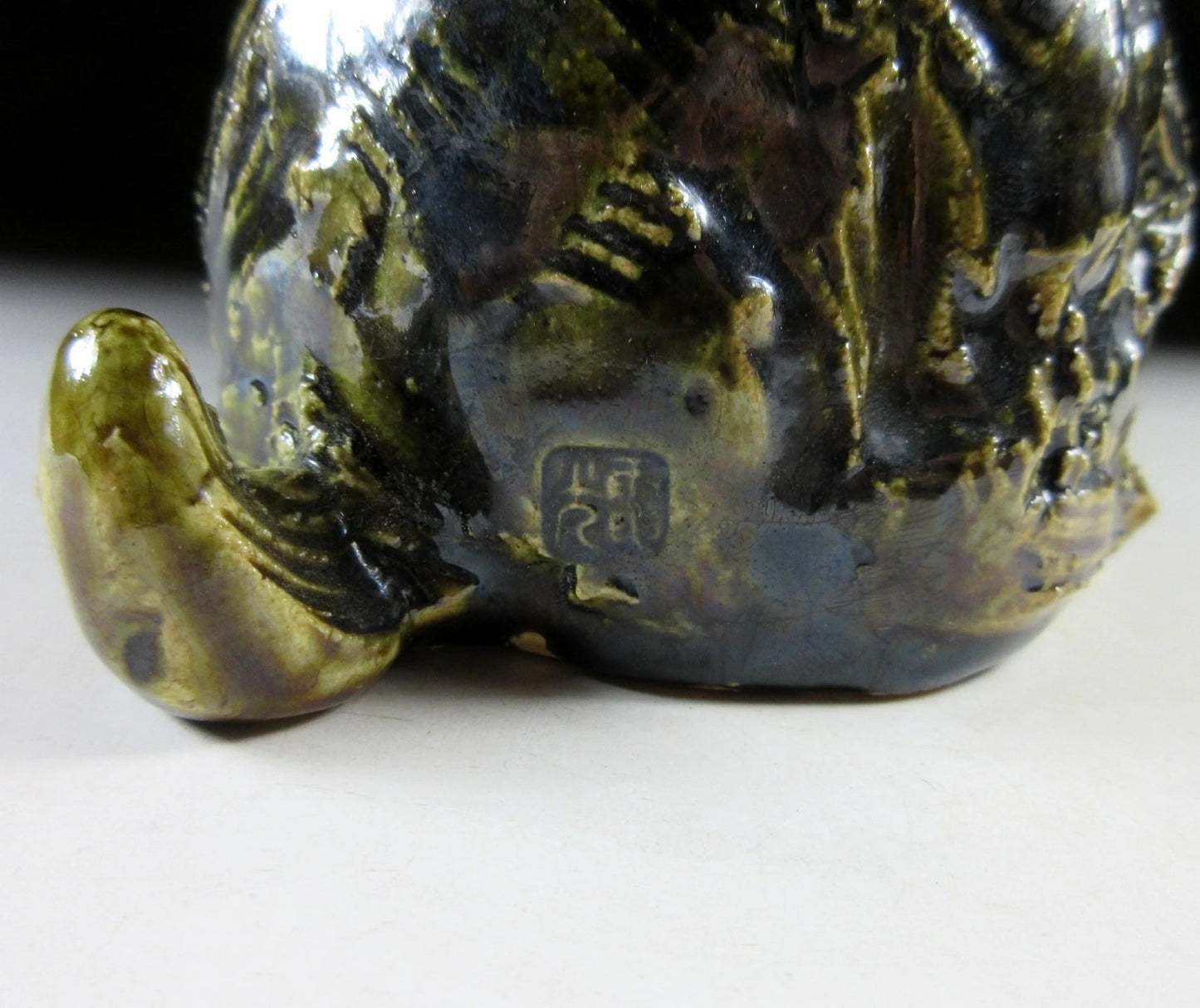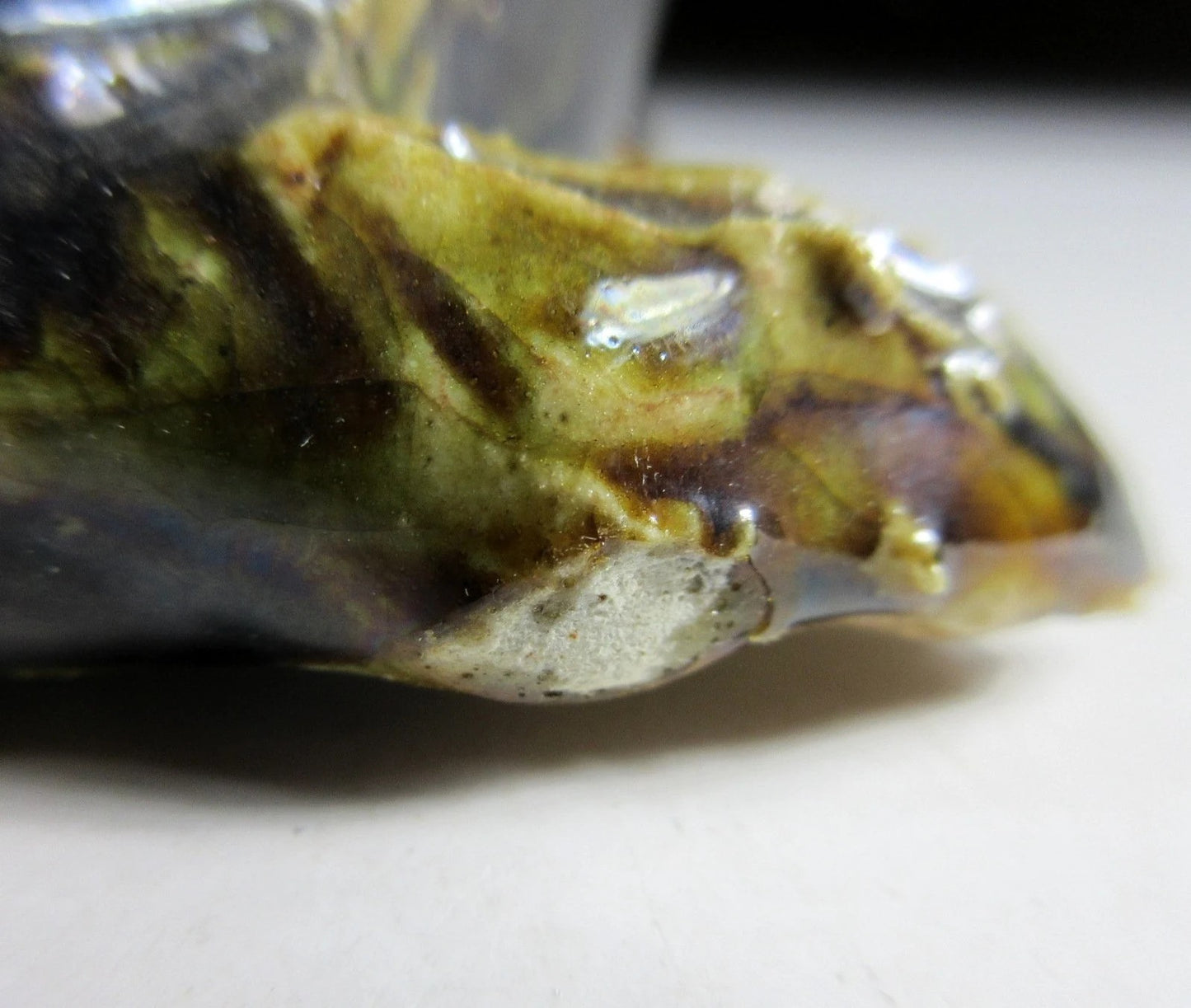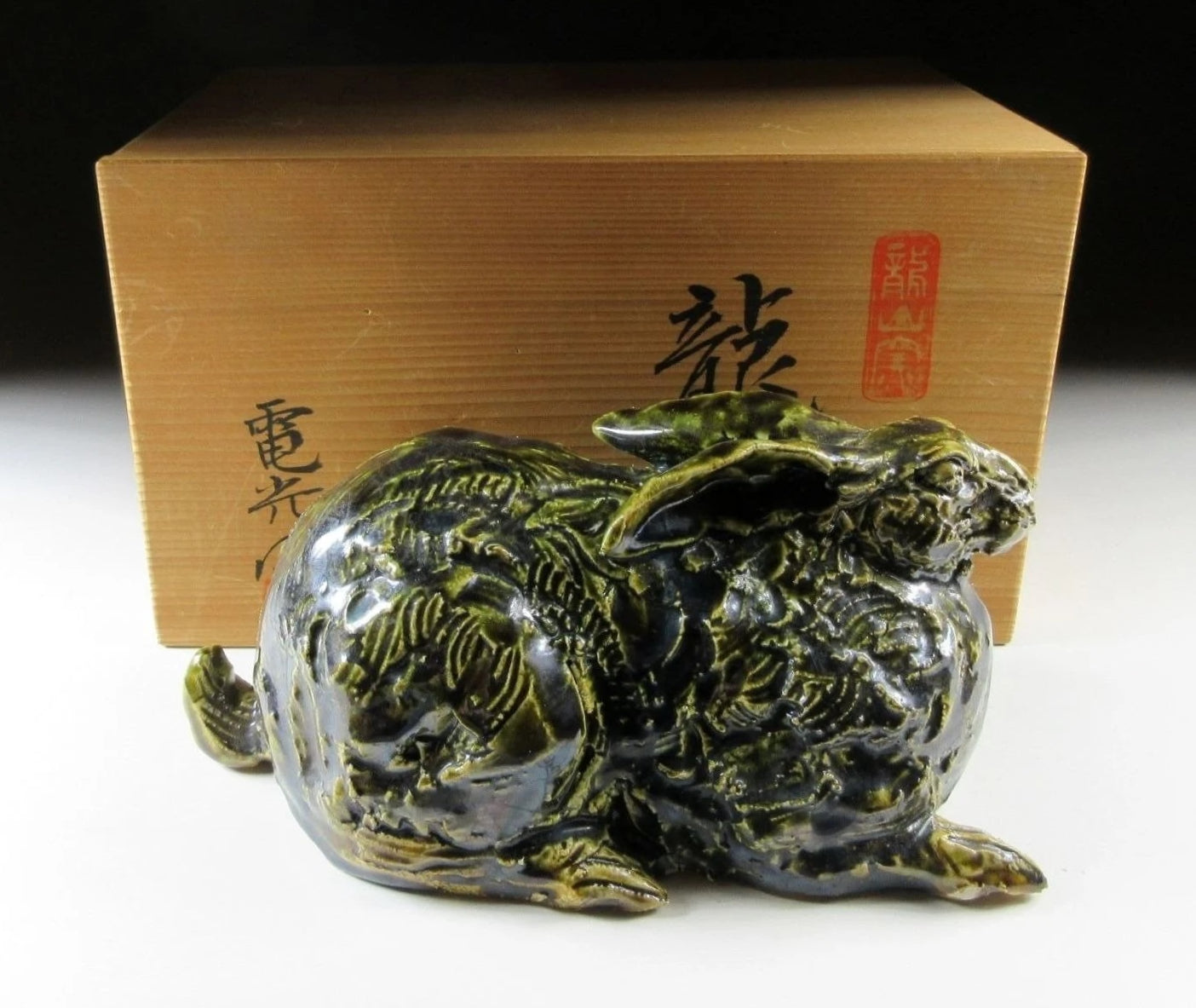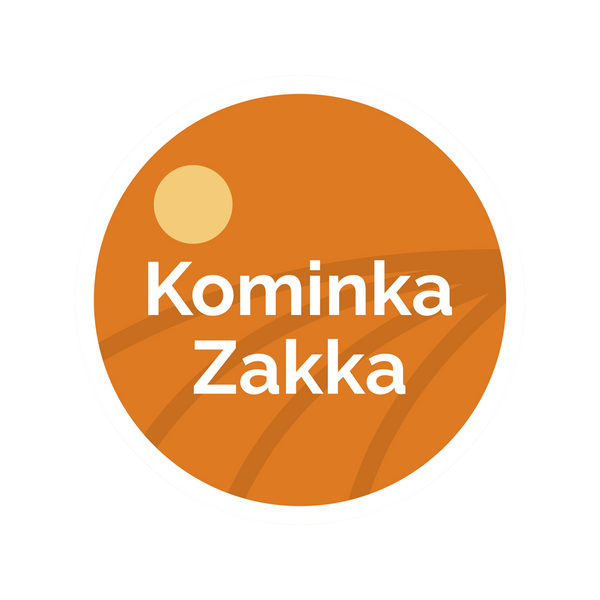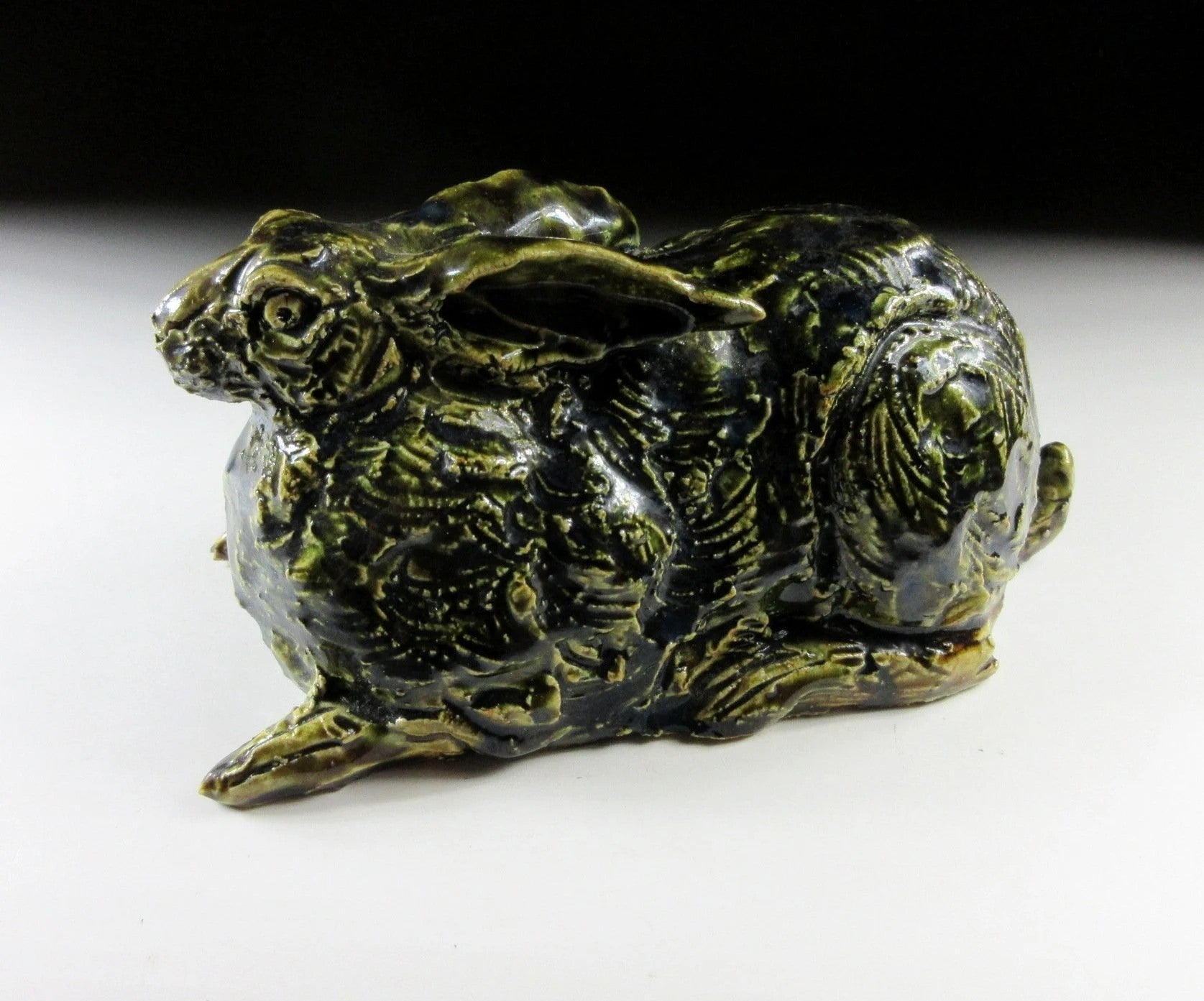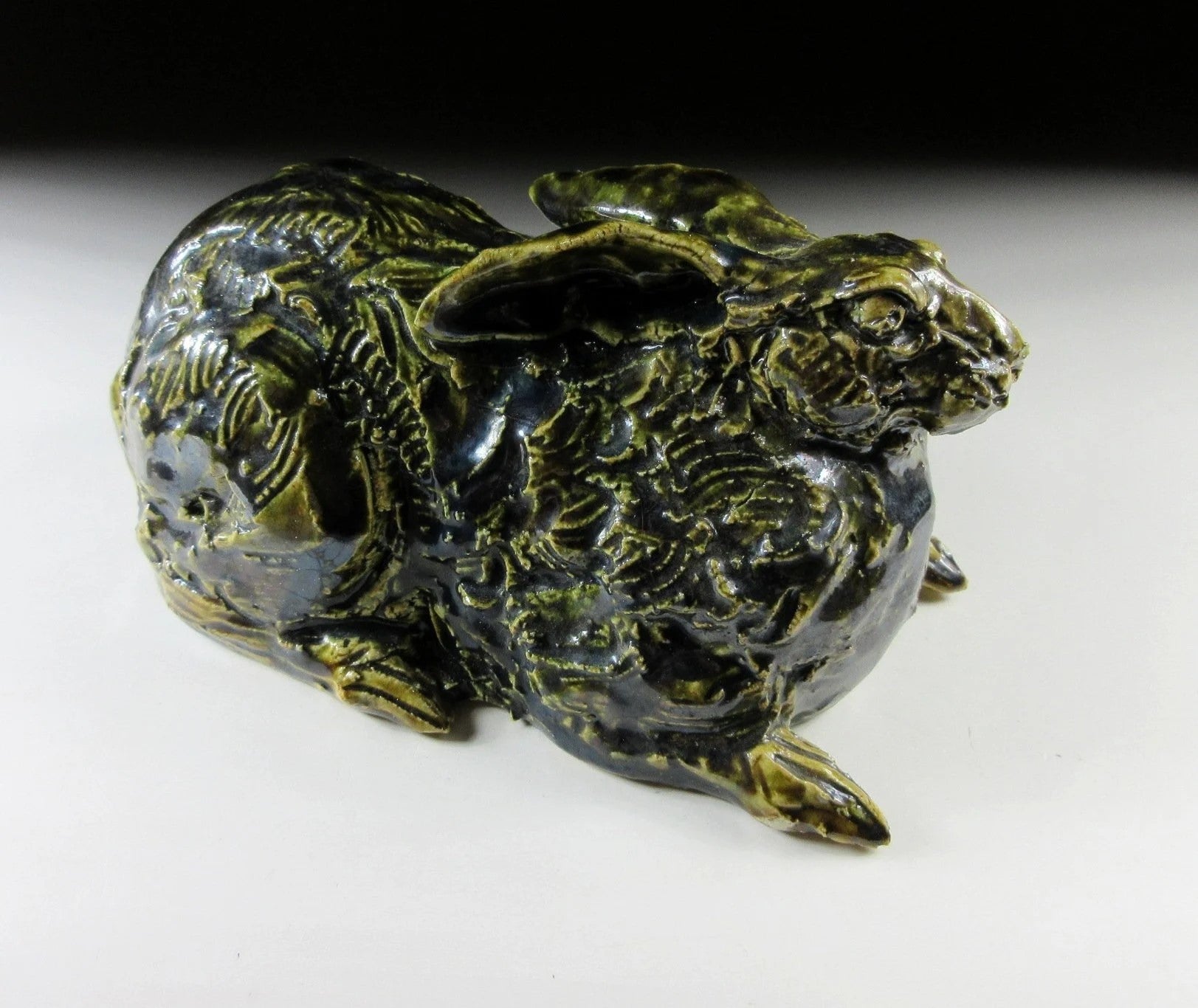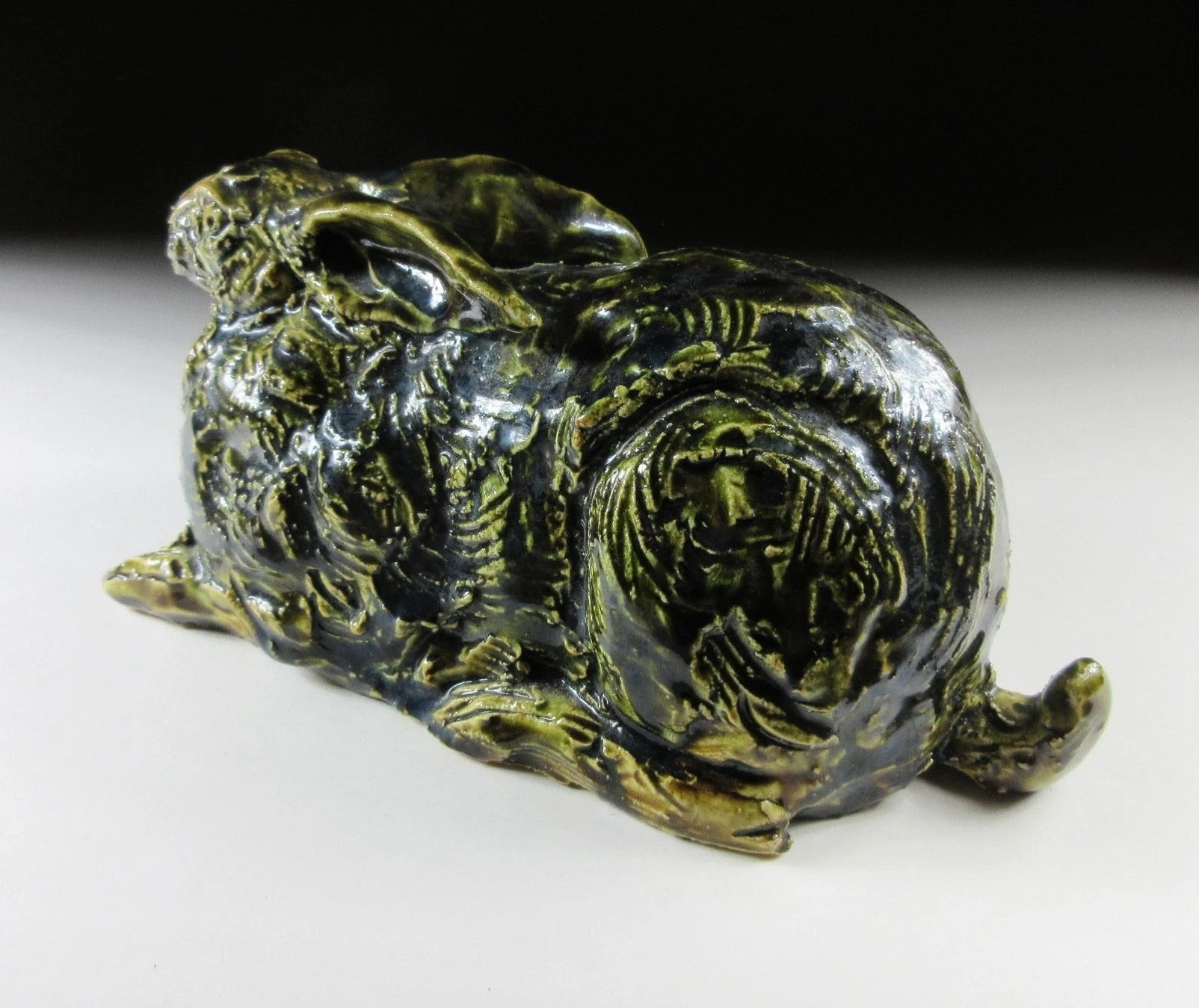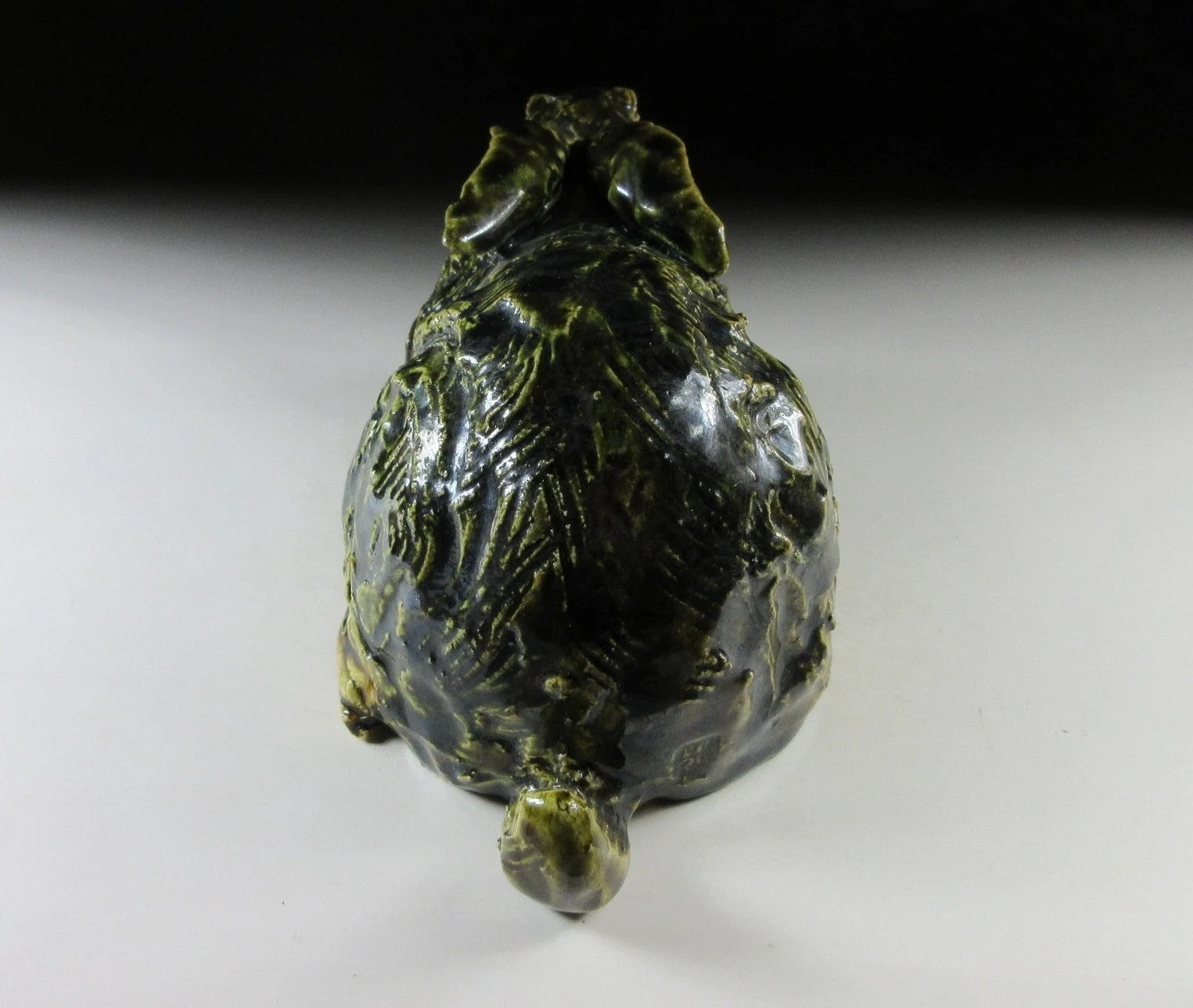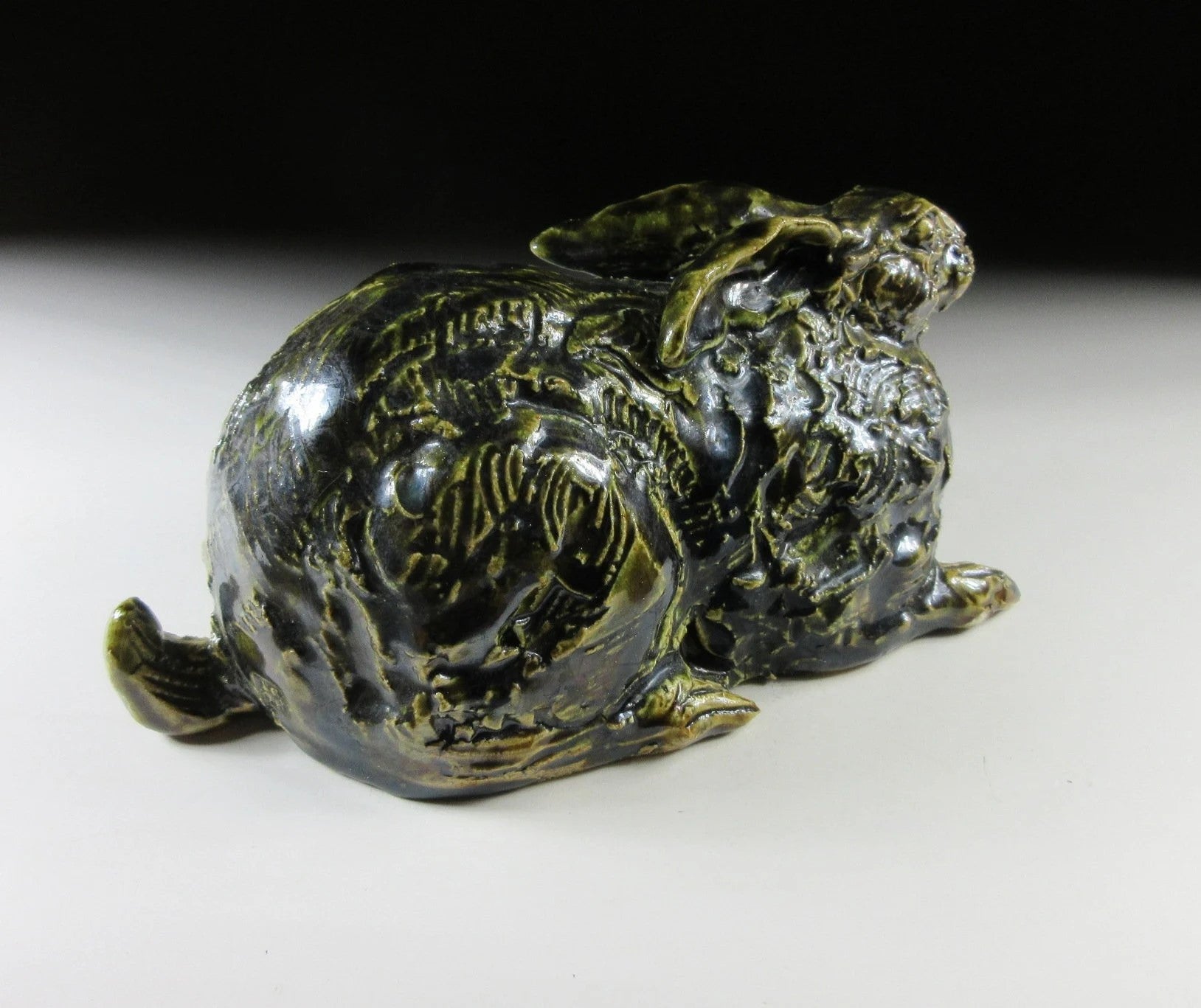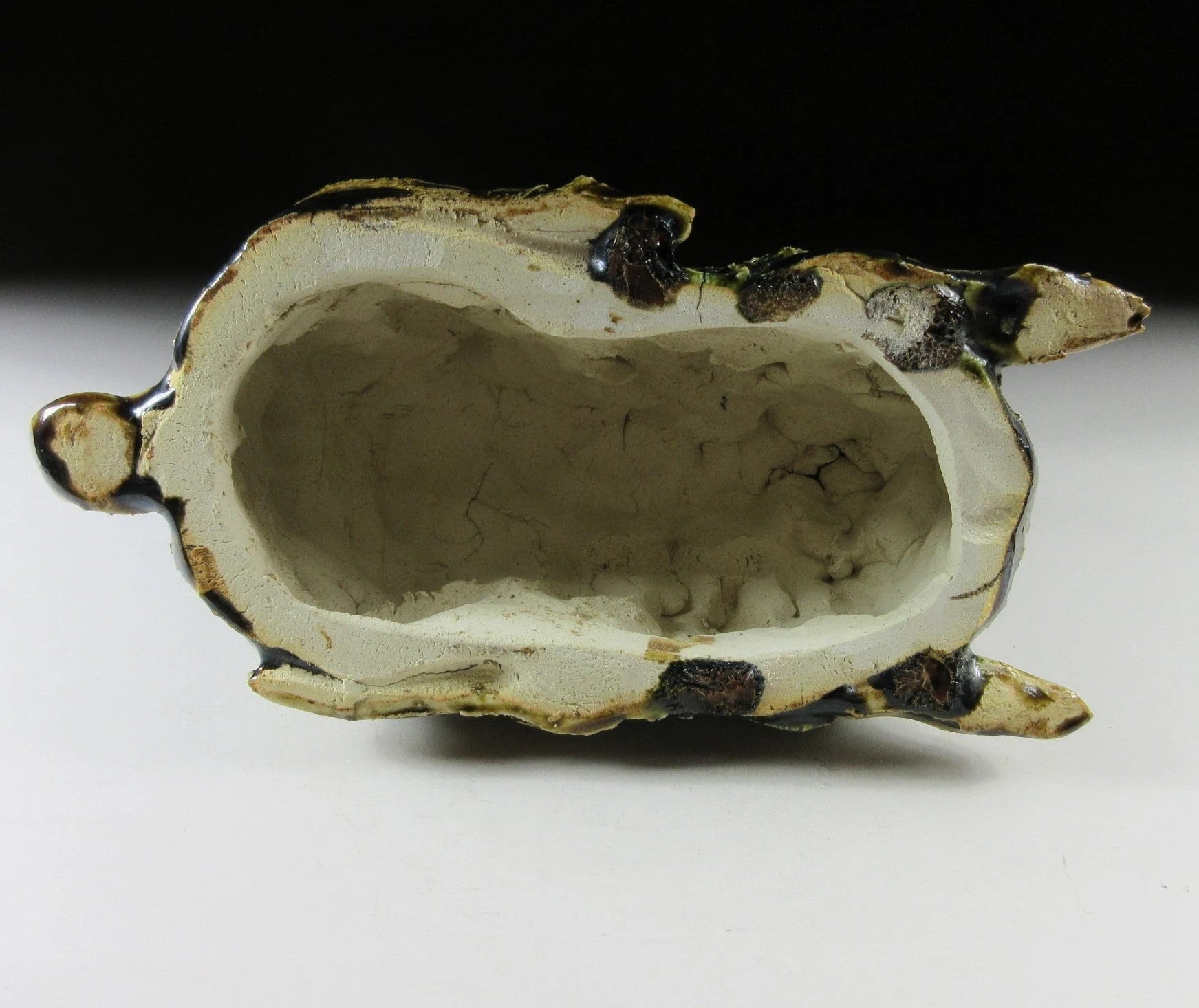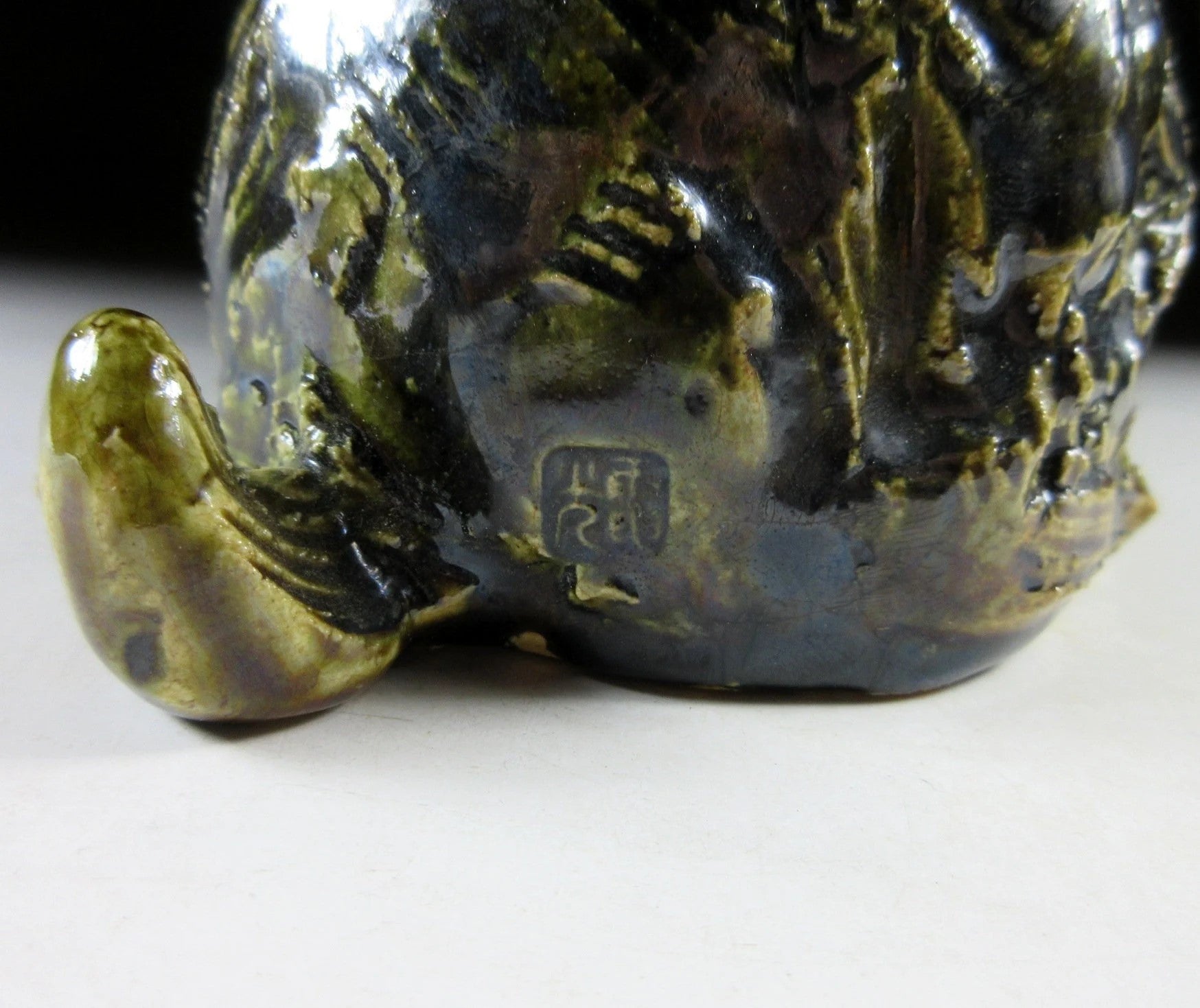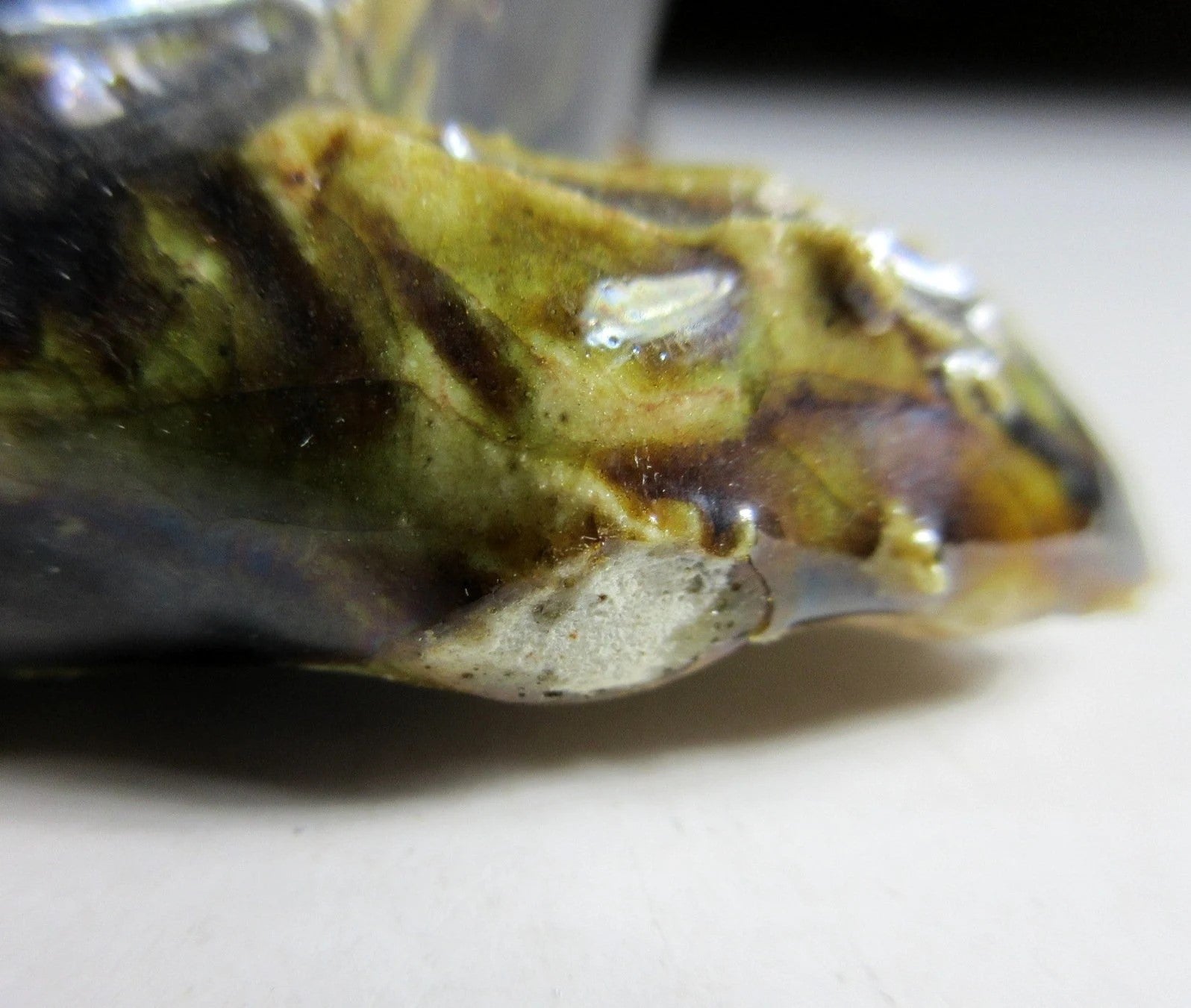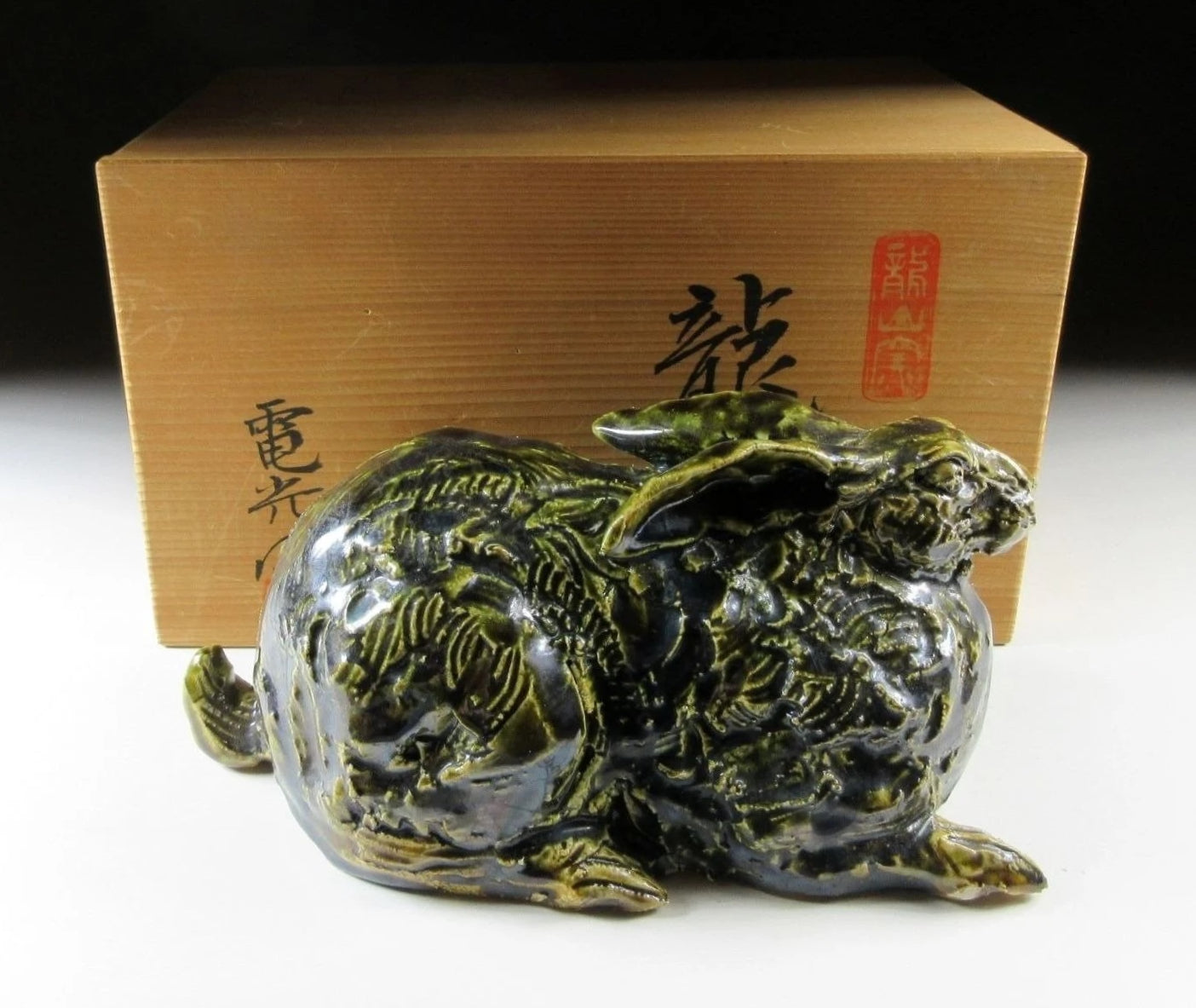Kominka Zakka
Maekawa Denko Year of the Rabbit Okimono
Maekawa Denko Year of the Rabbit Okimono
Couldn't load pickup availability
*THIS ITEM EXCEEDS THE SMALL PACKET WEIGHT LIMIT, PLEASE SCROLL TO THE END OF THIS LISTING FOR SHIPPING DETAILS AND PRICE OPTIONS FOR UPGRADING TO EMS EXPRESS.
This listing is for a splendid Oribe glaze rabbit okimono made around 20-30 years ago by noted potter, Maekawa Denko. It is made from a mould and coated in green copper glaze, and has a wonderfully textured surface. It was most likely made to commemorate the Year of the Rabbit back in either 1987 or 1999. It comes with its original signed wooden storage box.
Maekawa Denko is a Seto-ware potter who works out of Hachioji Gama. In 1968 he received the Seto Ceramics Exhibition Mayor Award, and in 1970 one of his pieces was selected and gifted to the crown prince and princess of Japan. In 1978 he held his first solo exhibition in Yokkaichi Kintetsu Department Store, and in 1994 he completed a volunteer project working with underprivileged youths in Seto. In 1995 he held a solo exhibition at Nagoya’s Mitsukoshi flagship store, the first of many during his career. In 2002 he conducted workshops at the Smithsonian Institute, and from 2003-2005 he was a senior overseas volunteer and instructed ceramics at a training centre in Tunisia. He is best known for his okimono figurines, particularly his komainu temple guardian lion dogs. **Fellow sellers, this information was researched by Kominka Zakka and CANNOT be used in your own listings.
Oribe-ware uses blue or green copper glazes and often features simple design motifs such as squares, rectangles, and circles. It takes its name from Furuta Oribe, a tea master and pupil of Sen Rikyu. For Japanese potters, it was the first use of colour in the glazing of stoneware, and at the time was said to have a very simple and modernistic look about it. These days Oribe-ware still enjoys much popularity, with plates, bowls, and cups commonly produced in and around the Seto area.
Japanese okimono figurines are decorative items used for display purposes. Junishi okimono are those commemorating the twelve animals and mythological beasts from the astrological calendar. The Japanese astrological calendar is known as eto, and the twelve creatures are called junishi. The Zodiac’s popularity peaked during the Edo Era, and it was then that junishi okimono production became more widespread. These days, potters and production kilns produce hundreds of junishi each year to welcome the coming New Year. These are often displayed in shops, restaurants, people’s homes, and tea rooms.
Sizes
Box: H.16.8cm (6.6”) x 25.5cm (10”) x 14.5cm (5.7”)
Okimono: H.9.2cm (3.6”) x L.21cm (8.2”) x 10.8cm (4.2”) across
Condition
It’s in very good condition aside from a piece of glaze chipped off (or unglazed spot) on one foot, and there’s a firing crack on the bottom.
THESE ARE SHIPPING ESTIMATES BASED ON THE CURRENT GLOBAL SITUATION
**Germany, France, Greece, Spain, Poland, Austria, Slovakia, Lithuania, Slovenia: NO SHIPPING. Very strict and expensive packaging laws in place and we are not licensed to send products to these countries. We have no plan to register at this time because the process is in some cases very expensive and complicated, plus each country has its own set of regulations and application process.
**USA: SAL Sea Mail (approx. 11-12 weeks), an upgrade for EMS Express (10-15 days) available for an additional 5100 yen.
**UK , Canada, Australia, New Zealand, Switzerland, Norway: SAL Sea Mail (approx. 8-12 weeks depending on the destination), an upgrade for EMS Express (10-15 days) available for an additional 4050 yen.
**Asia: SAL Sea Mail (approx. 6-8 weeks), an upgrade for EMS Express (7-10 days) available for an additional 2050 yen.
**Russia: No shipping methods available.
Share
